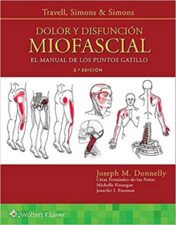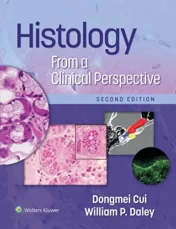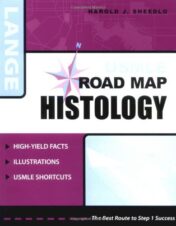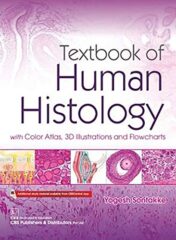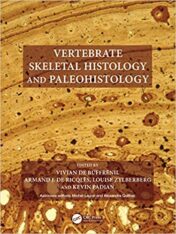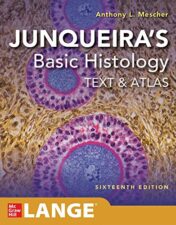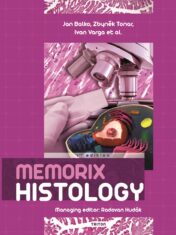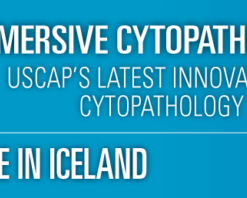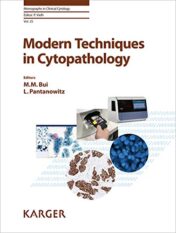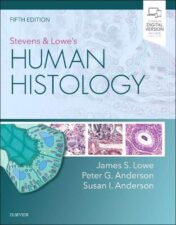Discover the Best Histology Books to Enhance Your Knowledge
Discover the Best Histology Books Now!
Are you looking for the best histology books to help you understand the microscopic anatomy of cells and tissues? Look no further! At DentalBooks.net, we have a wide selection of histology books that will provide you with the knowledge and understanding you need. Our books are written by experts in the field and cover topics such as cell biology, tissue structure, and histological techniques. Whether you’re a student or a professional, our books can help you gain a better understanding of the microscopic world. Plus, our prices are unbeatable! So don’t wait any longer – discover the best histology books now at DentalBooks.net!
Basic Sciences Books
Diagnostic Pathology: Normal Histology, 3rd Edition (Original PDF from Publisher)
Histology Books
difiore’s Atlas of Histology with Functional Correlations,13th edition SAE 2017 Original PDF
Histology Books
Leong’s Manual of Diagnostic Biomarkers for Immunohistology, 4th edition 2022 Original PDF
Histology Books
Gartner & Hiatt’s Atlas and Text of Histology, 8th Edition 2022 High Quality Scanned PDF
Histology Books
DOLOR Y DISFUNCION MIOFASCIAL: El manual de los puntos gatillo 2019 High Quality pdf
Histology Books
Texto de histología: Atlas a color, 5e 2021 EPUB + Converted PDF
Histology Books
Gartner & Hiatt’s Atlas and Text of Histology, 8th Edition 2022 EPUB3 + Converted PDF
Histology Books
Histology From a Clinical Perspective 2021 epub3+converted pdf
Histology Books
Netter’s Essential Histology 3rd Edition With Correlated Histopathology 2020 original pdf
Histology Books
Histology Books
Electronic Monitoring of Feeding Behavior of Phytophagous True Bugs (Heteroptera) 2021 Original pdf
Histology Books
Histology Books
Textbook of Human Histology: With Color Atlas 3D Illustrations and Flowcharts (Original PDF)
Histology Books
Histology Books
Histology Books
Vertebrate Skeletal Histology and Paleohistology (Original PDF)
Histology Books
Histology Books
Histology Books
Histology Books
Stevens & Lowe’s Human Histology, 5th Edition (Original PDF)
Histology Books
Introduction
Are you looking to enhance your knowledge of histology? If so, then you've come to the right place! Here at Discover the Best Histology Books, we have compiled a comprehensive list of the best books on histology available. Our selection includes books for both beginners and experts alike, covering topics such as cell biology, tissue structure, and more. With our help, you can easily find the perfect book to help you gain a better understanding of this fascinating field. So, what are you waiting for? Start exploring our selection today and discover the best histology books to enhance your knowledge!
Introduction to Histology: A Guide to the Study of Cells and Tissues
Introduction to Histology: A Guide to the Study of Cells and Tissues is an essential resource for anyone interested in learning about the microscopic structure of cells and tissues. This comprehensive guide provides a thorough overview of histology, from basic concepts to more advanced topics. It covers the fundamentals of cell biology, including cell structure, function, and organization, as well as the various types of tissues and their roles in the body. The book also explores the techniques used to study cells and tissues, such as light microscopy, electron microscopy, and immunohistochemistry.
The book begins with an introduction to the field of histology, discussing its history, scope, and importance. It then moves on to discuss the basics of cell biology, including cell structure, organelles, and the different types of cells. It also covers the various types of tissues, including epithelial, connective, muscle, and nervous tissue. The book then delves into the techniques used to study cells and tissues, such as light microscopy, electron microscopy, and immunohistochemistry. It also discusses the use of stains and dyes to enhance the visibility of cells and tissues.
In addition to providing an overview of the field of histology, Introduction to Histology: A Guide to the Study of Cells and Tissues also includes detailed information on specific topics, such as the structure and function of the nucleus, the role of the cytoskeleton, and the mechanisms of cell division. It also covers the development of tissues and organs, as well as the role of stem cells in tissue repair and regeneration. Finally, the book provides an overview of the diseases and disorders that can affect cells and tissues, including cancer, autoimmune diseases, and genetic disorders.
Overall, Introduction to Histology: A Guide to the Study of Cells and Tissues is an invaluable resource for anyone interested in learning about the microscopic structure of cells and tissues. It provides a comprehensive overview of the field, from basic concepts to more advanced topics. With its clear explanations and detailed illustrations, this book is an essential resource for students, researchers, and medical professionals alike.
Atlas of Human Histology: With Functional Correlations
Atlas of Human Histology: With Functional Correlations is an essential resource for medical students, researchers, and clinicians. This comprehensive atlas provides detailed images of human histology, along with functional correlations to help readers understand the structure and function of cells, tissues, and organs.
The book begins with a brief introduction to the fundamentals of histology, including cell structure, tissue types, and organ systems. It then moves on to cover the major organ systems in detail, including the cardiovascular system, respiratory system, digestive system, urinary system, reproductive system, endocrine system, and nervous system. Each chapter includes detailed descriptions of the histological features of each organ system, along with diagrams and photographs to illustrate the structures and functions.
In addition to providing detailed information about the anatomy and physiology of each organ system, Atlas of Human Histology also includes functional correlations to help readers understand how the different parts of the body interact and work together. For example, the book explains how the cardiovascular system works with the respiratory system to deliver oxygen to the body’s cells, and how the digestive system breaks down food into nutrients that can be used by the body.
Atlas of Human Histology also includes a section on pathology, which covers common diseases and disorders of the various organ systems. This section includes detailed descriptions of the symptoms, causes, and treatments of various diseases, as well as diagrams and photographs to illustrate the pathological changes that occur in the body.
Overall, Atlas of Human Histology: With Functional Correlations is an invaluable resource for medical students, researchers, and clinicians. It provides detailed information about the anatomy and physiology of the human body, along with functional correlations to help readers understand how the different parts of the body interact and work together. The book also includes a section on pathology, which covers common diseases and disorders of the various organ systems.
Histology: A Text and Atlas with Correlated Cell and Molecular Biology
Color Atlas of Histology
Fundamentals of Histology and Microscopic Anatomy
Fundamentals of Histology and Microscopic Anatomy is a field of study that focuses on the microscopic structure of tissues and organs. It is an important part of medical science, as it helps to understand the structure and function of cells, tissues, and organs. Histology and microscopic anatomy are used to diagnose diseases, identify abnormalities, and provide insight into the development and progression of disease.
Histology is the study of the microscopic structure of tissues and organs. It involves the use of a microscope to examine the structure of cells, tissues, and organs. Histology can be used to identify different types of cells, such as epithelial cells, muscle cells, and nerve cells. It can also be used to identify different types of tissue, such as connective tissue, muscle tissue, and nervous tissue. Histology can also be used to identify different types of organs, such as the heart, lungs, and kidneys.
Microscopic anatomy is the study of the microscopic structure of organs and tissues. It involves the use of a microscope to examine the structure of organs and tissues. Microscopic anatomy can be used to identify different types of organs, such as the heart, lungs, and kidneys. It can also be used to identify different types of tissues, such as connective tissue, muscle tissue, and nervous tissue. Microscopic anatomy can also be used to identify different types of cells, such as epithelial cells, muscle cells, and nerve cells.
Histology and microscopic anatomy are essential for understanding the structure and function of cells, tissues, and organs. They are used to diagnose diseases, identify abnormalities, and provide insight into the development and progression of disease. Histology and microscopic anatomy are also used in research to gain a better understanding of how cells, tissues, and organs work together to maintain health.





